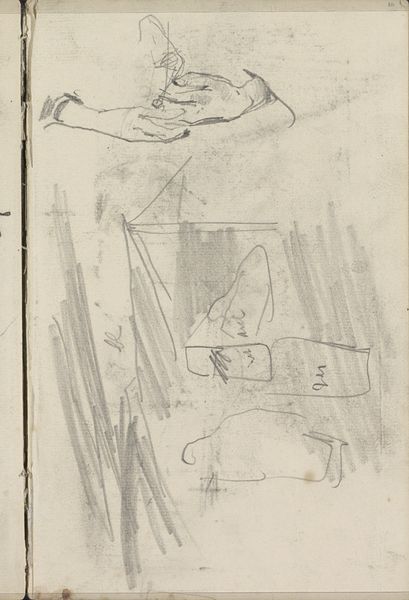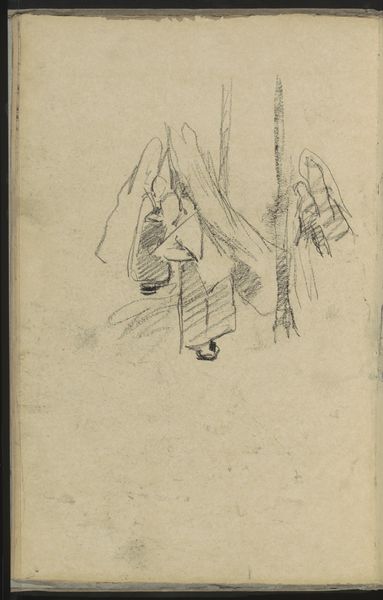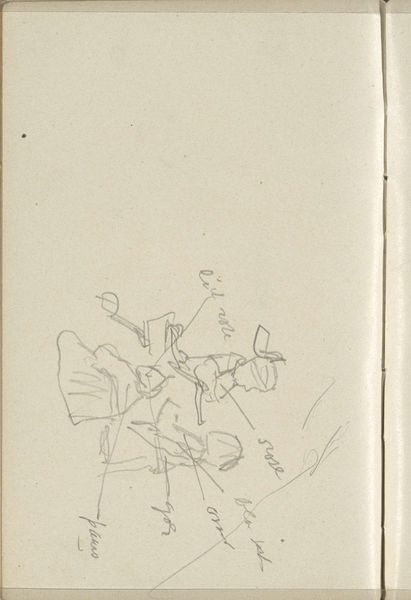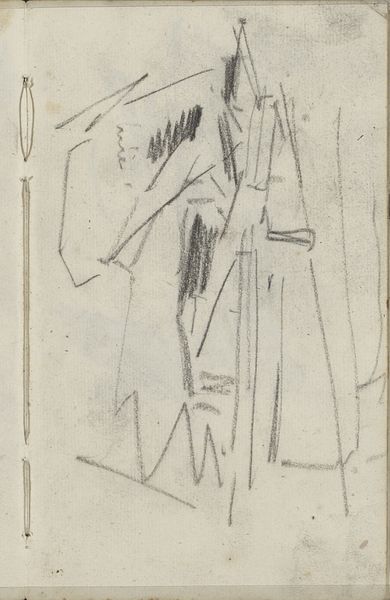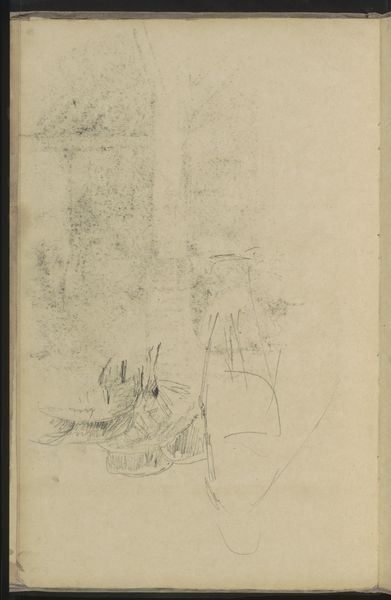
drawing, paper, pencil
#
drawing
#
impressionism
#
landscape
#
paper
#
pencil
Copyright: Rijks Museum: Open Domain
Curator: This drawing, titled "Kamerplant voor een raam" or "Houseplant in front of a window," was created by George Hendrik Breitner between 1880 and 1882. It’s a quick pencil sketch on paper. Editor: My first impression is quiet intimacy. The sparseness of the lines gives it a feeling of being a captured private moment. Curator: It's interesting to consider what domestic spaces meant to Breitner at this time in his career. He's primarily known for his street scenes of Amsterdam. Why this seemingly mundane indoor scene? Was it a commission? Or personal reflection? Editor: I read it as almost an icon of domesticity – a silent witness, the plant stands at the window’s threshold between the interior and exterior world, evoking the enduring symbol of hearth and home. Its simple representation emphasizes this symbolic importance, a grounding presence. Curator: Do you think its style relates to impressionism? Is that too on the nose, or too limiting, for this specific drawing? The swiftness, yes, but also the ambiguity of its place in Breitner's larger narrative complicates it, don't you think? Was this just a way of practising and preparing for the larger, more involved paintings, or did it act as a form of silent observation? Editor: Precisely! The sketch-like quality also resonates with the psychological theory of early memories – fragmented, and evocative precisely because of what's *not* shown. In that sense, the visible strokes bear a double weight: of rapid execution and faded remembrance. Curator: The emptiness surrounding the drawing also makes me think about the rise of plein-air painters and urban sketchers - a kind of quick note that reminds me of 19th century Japonisme craze. And what do we know of the space where Breitner captured this image, and how does this space reflects on the wider social issues that impact artists during those years? I always ask too many questions! Editor: No, the right amount! And your connection with social changes is what completes my point of view. Perhaps that's why I find its bareness to be strangely soothing. There's honesty and fragility within the composition, qualities reflecting the artist’s way of perceiving the world. It is interesting how historical observation and symbolical representation connect with psychology here. Curator: Definitely.
Comments
No comments
Be the first to comment and join the conversation on the ultimate creative platform.

